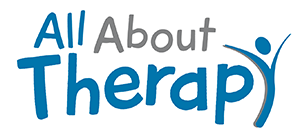Many children who receive therapy services as a part of early intervention (EI) do so in the “natural environment.” Natural environment is also called the “least restrictive environment” in IEPs, IFSPs, and other documentation. What is the natural environment, for therapy purposes? It is the place where your child spends much of his normal day, whether that is at home, at school, or in a child-care setting. Instead of receiving Occupational Therapy in a clinic or office, the occupational therapist goes to the place where the child spends his day and performs needed therapy services there. Here are 10 reasons this is a great idea!
1 – Children really do learn best in their natural environment and in naturally occurring situations. A structured office setting is not advantageous for young children and often causes anxiety.
2 – It’s the law! Did you know that the Individuals with Disabilities Education Act (IDEA) requires that infants and toddlers with disabilities receive early intervention services in the natural environment whenever possible? The main exception occurs when specialized equipment needed for therapy cannot be transported safely to the natural environment. For more information, see the ECTA Center website. http://ectacenter.org/topics/eiservices/eiservices.asp
3 – Therapy done in the natural environment is much less disruptive to your child’s day. It is also less disruptive to the adult/parent/caregiver and other children in the home or school.
4 – Therapists help solve problems that actually occur where the child spends the majority of his day. Your child won’t have to transfer skills learned in an office setting to his home or school environment. Learning needed skills in the natural environment greatly reduces time needed to generalize those skills.
5 – Sometimes therapists are able to identify issues that parents and caregivers were not aware of. For example, if a child has meltdowns frequently in one area, a therapist may be able to identify that fluorescent lighting or some peripheral noise is the cause. The therapist can then work to address those
6 – Skills like following directions and transitioning are best learned in the natural environment. These situations are hard to replicate in the office setting and are at best, heavily staged. For example, learning to wait your turn in a clinic is not the same skill as learning to wait in a line at preschool.
7 – By visiting the natural environment, a family’s cultural and lifestyle choices can be observed, respected, and worked with for the benefit of the entire family. The therapist can assist in helping the child obey family rules and customs.
8 – An occupational therapist has the opportunity to coach the entire family in living with a special-needs child. This is particularly helpful when the child is prone to extreme sensory issues or meltdowns, which will have an effect on the entire family.
9 – Appointments can be made for different times of day to help the child with more challenging daily activities. I remember when my daughter had a hard time tolerating hair washing and our occupational therapist was able to put her in the tub in our home with my supervision. I know another therapist whose first appointment of the day was at 7:00 am, to assist a child with her wake up routine.
10 – Sometimes a therapist will be able to accompany a parent and child on a special outing, such as to the local library, worship center, or store. When a child has issues in those frequently visited places, the therapist can help the child in the location itself. For example, my daughter was afraid of the toilets at our local library and it was important to us that she learn how to tolerate them.
If you have questions about occupational therapy in the natural environment, or if you are just ready to get started, call All About Therapy for Children in Raleigh at 919-448-6018. We serve Raleigh, Durham, Cary and Apex in North Carolina. We look forward to hearing from you!
